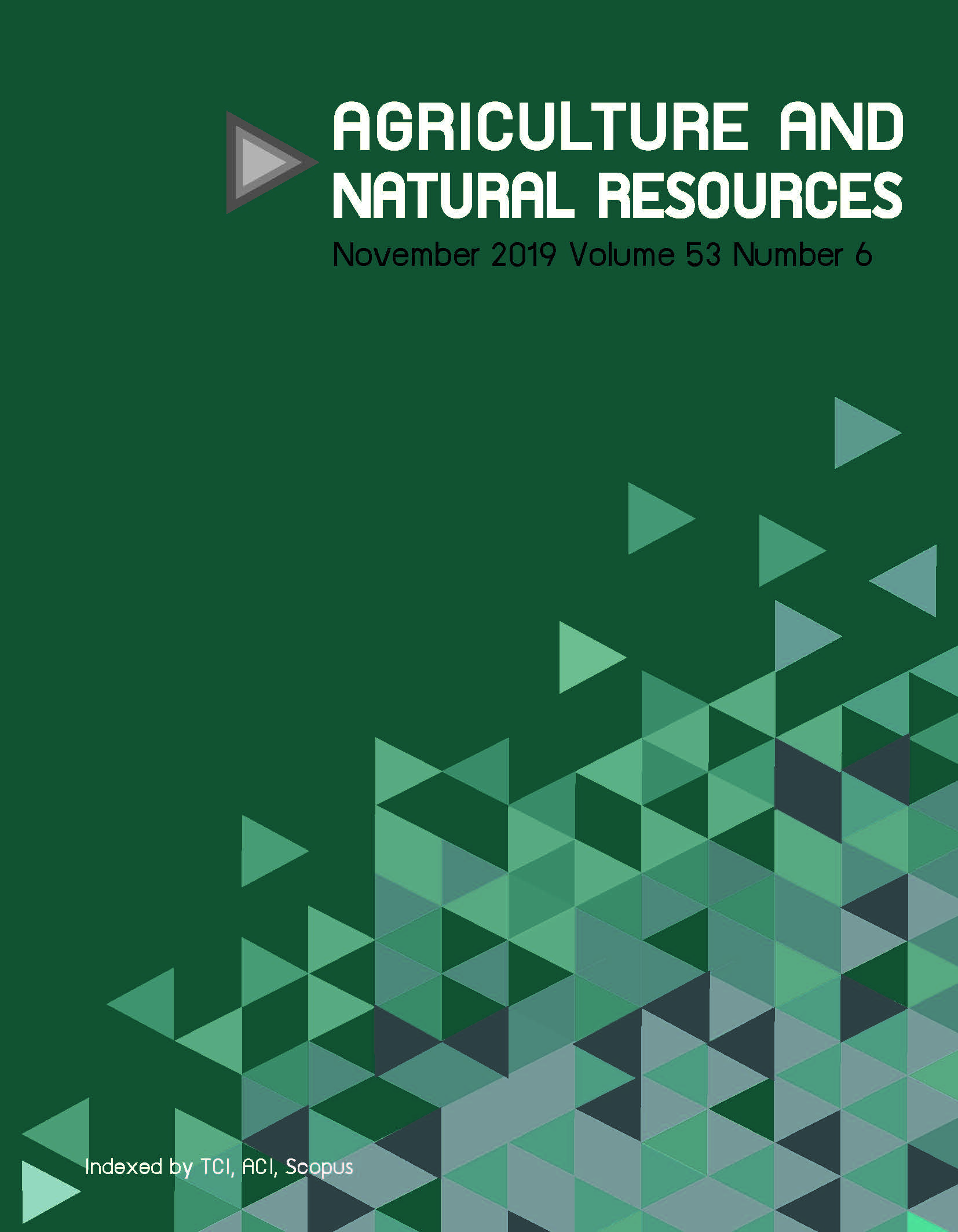Antioxidant and anti-HIV properties and isolation of bioactive compound of Hymenodictyon orixense (Roxb.) Mabb.
Keywords:
Anti-HIV activity, Antioxidant activities, Fractionation, Hymenodictyon orixense (Roxb.) MabbAbstract
Hymenodictyon orixense (Roxb.) Mabb., or “Som Kob” or “U-Lok” in Thai, is known as a folk medicinal plant. This plant has been used against different dermal diseases, fever and chicken pox, indicating different bioactivity potentials. Methanolic extracts from three parts (bark, wood, fruit) of H. orixense were tested for their antioxidant activities using five assays (total phenolic content, total flavonoid content, 2,2-diphenyl-1-picrylhydrazyl (DPPH) radical scavenging activity, ferric reducing antioxidant power, nitric oxide radical activity). Bark crude extract had the highest antioxidant activity, so this part was chosen for further fractionation. The fractions were ranked based on from antioxidant and anti-HIV bioactivities. Fraction 2 had the highest level for total flavonoid content (323.63 mg of quercetin (QE) per gram) and nitric oxide radical activity (half maximal inhibitory concentration (IC50); 88.38 μg/mL). Fraction 4 contained the highest amounts of phenolic compounds (32.89 mg of gallic acid equivalent/g), while Fraction 5 had the highest activity of DPPH radical activity (IC50; 192.76 μg/mL) and ferric reducing antioxidant power (88.08 mg of trolox equivalent/g). For anti-HIV activity, all fractions produced a percentage inhibition greater than 50%, with Fraction 3 being the highest (89.80%) compared to the positive control (97.06%). In addition, scopoletin was isolated from the chloroform extract of the H. orixense bark. Isolation and structural elucidation of other crude chloroform extracts will be further analyzed. The current study demonstrated the potential of developing H. orixense as an antioxidant and anti-HIV agent.
Downloads
Published
How to Cite
Issue
Section
License
Copyright (c) 2019 Kasetsart University

This work is licensed under a Creative Commons Attribution-NonCommercial-NoDerivatives 4.0 International License.
online 2452-316X print 2468-1458/Copyright © 2022. This is an open access article under the CC BY-NC-ND license (http://creativecommons.org/licenses/by-nc-nd/4.0/),
production and hosting by Kasetsart University of Research and Development Institute on behalf of Kasetsart University.







